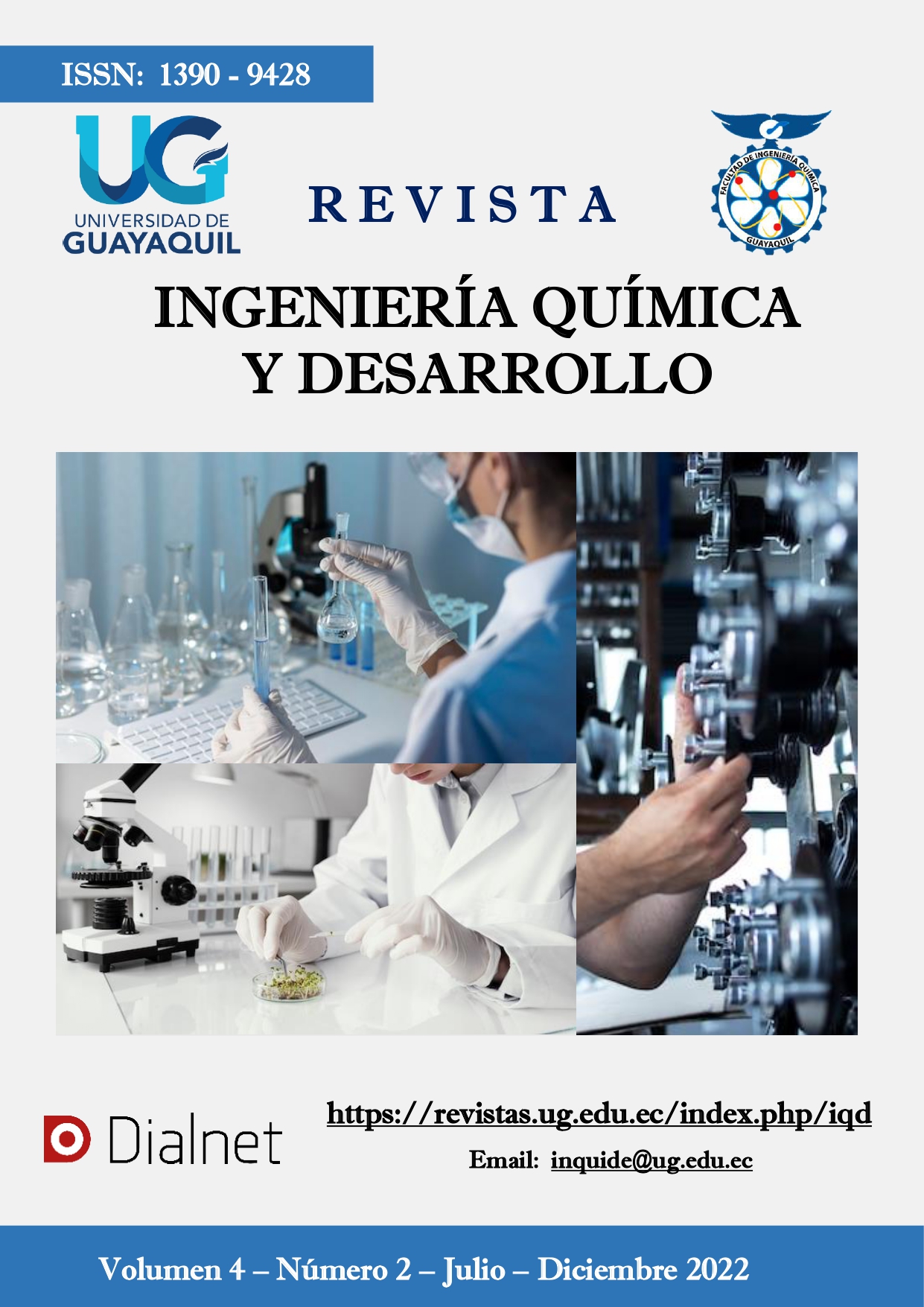Efecto del uso de mejoradores de textura sobre las características organolépticas de un producto vegano tipo embutido de pasta gruesa
Contenido principal del artículo
Resumen
La creciente población vegana en el mundo hace necesario el desarrollo de mejores productos alimenticios. El objetivo de la presente investigación fue elaborar un producto vegano tipo embutido de pasta gruesa, con propiedades organolépticas aceptables y contenido de proteínas elevado. Para ello, se prepararon fórmulas de embutido vegano donde se sustituyó en su totalidad la carne de origen animal con proteína de soya texturizada, empleando almidón de papa, carboximetilcelulosa (CMC) y gluten de trigo como mejoradores de textura; adicionalmente se emplearon especias, vegetales, glutamato, levadura nutricional, etc. Se aplicó análisis sensorial descriptivo y hedónico, se determinó la fuerza máxima de corte mediante un texturómetro y se cuantificó el contenido de proteína. Se determinó que la proporción ideal de aditivos es de un 20% gluten de trigo, 0-3% almidón de papa y 0-0,3% CMC, ya que así se obtuvieron los más altos valores de aceptación organoléptica, no existiendo diferencia significativa con un producto vegano tipo embutido comercial usado como control. Se logró mejorar la textura hasta valores de 911,50 + 93,00g (F1) y 861,89 + 66,17g (F4), superiores a otros desarrollos de embutidos veganos de la literatura. Por último, se determinó que el contenido de proteína de las dos fórmulas desarrolladas (F1 21,99%, F4 19,57%) es superior al de la muestra control (16%) e inclusive al de la longaniza manabita original (16%). En conclusión, la elaboración de un producto vegano tipo embutido de pasta gruesa es factible maximizando sus propiedades organolépticas gracias al uso de los tres mejoradores de textura.
Detalles del artículo
Sección

Esta obra está bajo una licencia internacional Creative Commons Atribución-NoComercial-SinDerivadas 4.0.
Cómo citar
Referencias
U. Saari, C. Herstatt, R. Tiwari, O. Dedehayir y S. J. Mäkinen, «The vegan trend and the microfoundations of institutional change: A commentary on food producers’ sustainable innovation journeys in Europe,» Trends in food science & technology, vol. 107, pp. 161-167, 2021.
T. Zhang, W. Dou, X. Zhang, Y. Zhao, Y. Zhang, L. Jiang y X. Sui, «The development history and recent updates on soy protein-based meat alternatives,» Trends in Food Science & Technology, 2021.
I. Ismail, Y. Hwang y S. Joo, «Meat analog as future food: a review,» Journal of animal science and technology, vol. 62, nº 2, p. 111, 2020.
S. Pickett, «Veganism, Moral Motivation and False Consciousness,» Journal of Agricultural and Environmental Ethics, vol. 34, nº 3, pp. 1-21, 2021.
G. DaSilva, J. Hecquet y K. King, «Exploring veganism through serious leisure and liquid modernity,» Annals of Leisure Research, vol. 23, nº 5, pp. 627-644, 2020.
M. Riaz, Soy Applications in Food, Boca Raton, Florida: CRC Press, 2006, pp. 1-21.
O. Malav, S. Talukder, P. Gokulakrishnan y S. Chand, «Meat analog: A review,» Critical reviews in food science and nutrition, vol. 55, nº 9, pp. 1241-1245, 2015.
J. Chiang, S. Loveday, A. Hardacre y M. Parker, «Effects of soy protein to wheat gluten ratio on the physicochemical properties of extruded meat analogues,» Food Structure, vol. 19, pp. 100-102, 2019.
M. Han y H. Bertram, «Designing healthier comminuted meat products: Effect of dietary fibers on water distribution and texture of a fat-reduced meat model system,» Meat Science, vol. 133, pp. 159-165, 2017.
C. Souza, E. Bellucci, J. Lorenzo y A. Barretto, «Low-fat Brazilian cooked sausage-Paio–with added oat fiber and inulin as a fat substitute: effect on the technological properties and sensory acceptance,» Food Science and Technology, vol. 39, pp. 295-303, 2019.
J. Lenis, F. Calle, G. Jaramillo, J. Perez, H. Ceballos y J. Cock, «Leaf retention and cassava productivity,» Field Crops Research, vol. 95, nº 2-3, pp. 126-134, 2006.
J. López-Alt, «How do they make plant-based meat behave like beef,» New York Times, 3 Marzo 2020.
M. Sadler, «Meat alternatives – market developments and health benefits,» Trends Food Sci Tech, vol. 15, pp. 250-260, 2004.
H. McIlveen y A. Abraham, «Meat avoidance and the role of replacers,» Nutr Food Sci, vol. 1, p. 29–36, 1999.
K. Kim, B. Choi, I. Lee, H. Lee, S. Kwon, K. Oh y Y. Kim, «Bioproduction of mushroom mycelium of Agaricus bisporus by commercial submerged fermentation for the production of meat analogue,» J Sci Food Agric, vol. 91, p. 1561–1568, 2011.
P. Singh, R. Kumar, S. Sabapathy y A. Bawa, «Functional and edible uses of soy protein products,» CRFSFS, vol. 7, p. 14–28, 2008.
P. Kumar, M. Chatli, N. Mehta, P. Singh, O. Malav y A. Verma, «Meat analogues: Health promising sustainable meat substitutes,» Critical reviews in food science and nutrition, vol. 57, nº 5, pp. 923-932, 2017.
Chaijan, Manat y W. Panpipat., «Pre-Neutralized Crude Palm Oil as Natural Colorant and Bioactive Ingredient in Fish Sausage Prepared from Tilapia (Oreochromis Niloticus),» Lwt, vol. 135, p. 110289, 2021.
